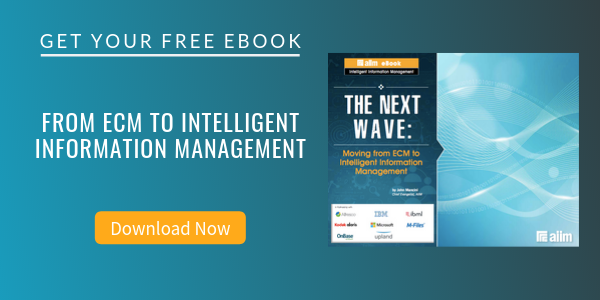
8 Things to Consider When Writing an ECM Proposal
Enterprise Content Management (ECM)
Writing proposals is like a love hate relationship, without the love. Many companies do not give proposal writing its due in the organization. Many companies believe that it is the salesman’s personal relationship with the customer that will win the deal, many companies respond to any and all RFPs by throwing together a “boilerplate” proposal with pricing. This is because many companies do not see the value in spending time and resources on proposal writing. This is where your company can be a winner by putting together a well written sales proposal that responds to the RFP requirements. This by itself will guarantee you a spot on the short list.
What to Consider When Writing an ECM Proposal
1. Read the RFP from cover to cover and annotate it with a highlighter and pen. If it is available in Word or PDF, use the highlight and comments tools.
And you are saying, “Gee Bud, I never thought of that.” And if you were on my end, as someone who writes RFPs, I would say that I can’t count the number of times I’ve referred the vendor back the RFP to answer a question or read proposals that seemed like they were responding to a different RFP. Read and annotate is the key to success.
2. Start writing down questions as you read the RFP.
Questions concern things you don’t understand in the RFP or information that is missing in the RFP. Submit questions as soon as possible so that you don’t do double work when writing the proposal. Questions force you to read the RFP closely.
ECM RFPs can be difficult because the technology is complex and diverse – document imaging, electronic document management, records management, workflow, and all of their supporting technologies like OCR, PDF/PDF-A, storage strategies, etc. RFPs can be written by people who may not fully understand the ECM technology array and all of its components, and so you may get a requirement for a workflow where there is no OCRing of MS Word documents. Don’t be adversarial; be collegial. Keep in mind that you are the expert in imaging or OCR, or how long it takes to implement workflow.
3. Once you have read the RFP and started your list of questions, begin to outline your proposal.
If the RFP gives you a proposal response format, follow it. If there is no outline, follow a general outline such as executive summary, technical section, management section, pricing, appendices. Start matching areas of your outline to the RFP and make writing assignments.
By the way, don’t throw a 27-page technical whitepaper about workflow into the middle your workflow response section – it ruins the natural flow of your response to a requirement. Save the big bulky whitepapers and studies for an appendix. In your outline, establish the appendices right away so that you can refer to them as you write….”As reviewed in Appendix B, OCR Character Analysis.” and “More detail on workflow can be found in Appendix C, Workflow Explained.”
4. Find all of the requirements.
This is an area that can be tricky and difficult because you often will not know if something is a requirement or not. Look for statements that have the word “shall,” “will,” “must,” as in “Vendors shall provide document library services,” or “Handprint recognition will be required.” I often built an Excel table of all the required statements so that I know that I am responding to each one.
5. Start writing as soon as possible once you have the proposal outline developed.
I can’t tell you how important this is because only by writing will you uncover even more important questions and possible issues that you may not have “noticed” just by reading the RFP. Some issues/questions will be internal to your company/solution, like a lack of a certain technology or an implementation/management requirement. By the way, watch your use of boilerplate. I’ve seen vendors throw in a complete 2-page datasheet to respond to a requirement that should have taken three good sentences.
6. Many RFPs state that “Pricing will only be a factor when two or more proposals have equal technical points.” And this is true.
While some companies will choose the lowest priced proposal, most companies want the best solution first and lowest pricing second. This is your chance to show where your product is different technically from all others. By the way, feature/benefit writing goes a long way to helping explain the value of your solution. OCR is a “feature” and “converting a TIF image to text” is a benefit. Feature/benefit selling is basic salesmanship that seems to have been lost. Remember, a proposal is a selling document, and it may represent your first contact with the customer.
7. Make time for a final review of your proposal.
I can’t tell you what it means to an evaluation team to see a proposal with lots of grammar mistakes, misspellings, sentences that are incomplete, sentences that have no context within a paragraph, and a proposal structure that is ill-defined. Evaluation teams I have been on have eliminated proposals due to the overall poor quality of writing, organization, lack of effort. If possible, ask another salesman or someone not helping with the proposal to read and comment on the proposal. Some vendors have a “Red Team,” which is a second group of people who can read and evaluate your proposal as if they were the customer.
8. Figure out how to make your proposal a winner among all the other proposals – while staying within the framework of the RFP.
In a recent proposal effort I helped on, we determined that key to winning the proposal was the experience of the implementation team. We hammered this point many times throughout our proposal - our implementation team had the most actual experience, had worked in that industry, and spoke the language. There would be no “learn on your nickel” time, no fresh-out-of-college people, and we would “hit the field running with a named senior implementation team.” We backed these statements up with solid resumes and references to similar successful implementations. This strategy not only worked, we won, but the customer mentioned this in our first project meeting. By the way, we were not the lowest priced.



